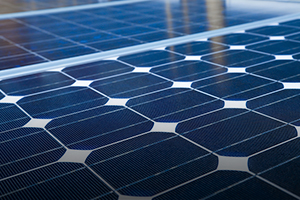Boosting Solar Cell Efficiency
 During the last few years, research in the field of photovoltaics has shifted from the use of silicon-based materials (which are costly to manufacture) to perovskites – a class of materials with a characteristic crystalline structure that makes them suitable for thin-film applications (such as solar windows). However, perovskites require the use of expensive “hole-transporting” materials to transmit the positive charges generated when light strikes the film.
During the last few years, research in the field of photovoltaics has shifted from the use of silicon-based materials (which are costly to manufacture) to perovskites – a class of materials with a characteristic crystalline structure that makes them suitable for thin-film applications (such as solar windows). However, perovskites require the use of expensive “hole-transporting” materials to transmit the positive charges generated when light strikes the film.
In a recently published report, scientists have developed a charge-transporting layer that is not only cheaper, but also more efficient than existing materials. The new material – dissymmetric fluorine dithiophene (FDT) – is about one-fifth the cost of current materials, is easy to synthesize and purify, and resulted in a conversion rate of 20.2 percent.
The economic benefits could be substantial on a global level. It’s been estimated that 100-gigawatts of photovoltaic material has been installed around the world to date, with a conversion efficiency of only about 15 percent.For information: Mohammad Nazeeruddin, Ecole Polytechniquie Federale de Lausanne, Group for Molecular Engineering of Functional Materials, Industrie 17, CH-1015 Lausanne, Switzerland; phone: +41-21-693-6124; email: mdkhaja.nazeeruddin@epfl.ch; Web site: http://gmf.epfl.ch/res